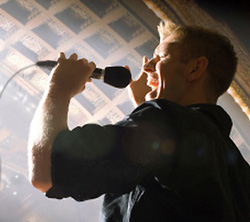
Both allow less “stage wash” or background sounds in than cardioid designs. When using floor monitors, they are less susceptible to feedback, and they’re generally more useful in loud stage environments.
Sensitivity specs indicate how much voltage appears at a mic’s output when a 1,000 Hz tone is heard at its diaphragm. The reference of 94 dB, or 1 Pascal, is typical of the sound intensity of talking at a distance of an inch.
An alternate reference of 74 dB, one-tenth of a Pascal or a “microbar,” is typical of a talker a foot distant, but these measurements are easily converted by adding 20 dB. We’ve converted all specs to dBV (0 dB = 1 V/Pa 1,000 Hz) for ease of comparison.
Dynamic mics generally don’t use phantom power, and so they don’t pop when unplugged, allowing microphones with similar sensitivities to easily be compared by just swapping a cable. Mics with greater (less negative) sensitivity, can sometimes sound better simply because they’re a bit louder.
Vocal microphones are not “flat” in frequency response. The exaggerated low-frequency response when held close to the mouth is called “proximity effect,” which most engineers remove with high-pass filters or low-frequency EQ.
They also have one or more peaks in their high-frequency response to aid in vocal articulation and create “presence.” Also worth noting is the off-axis frequency response, as it colors other sounds entering the mic, especially on loud stages.
Finally, handling noise is a quality of unique concern for handheld mics, and manufacturers go to lengths to attenuate mechanical vibration with internal suspension to isolate the capsule from the sounds created by holding the mic.
Let’s take a Photo Gallery Tour of a range of dynamic vocal mic offerings currently on the market.
